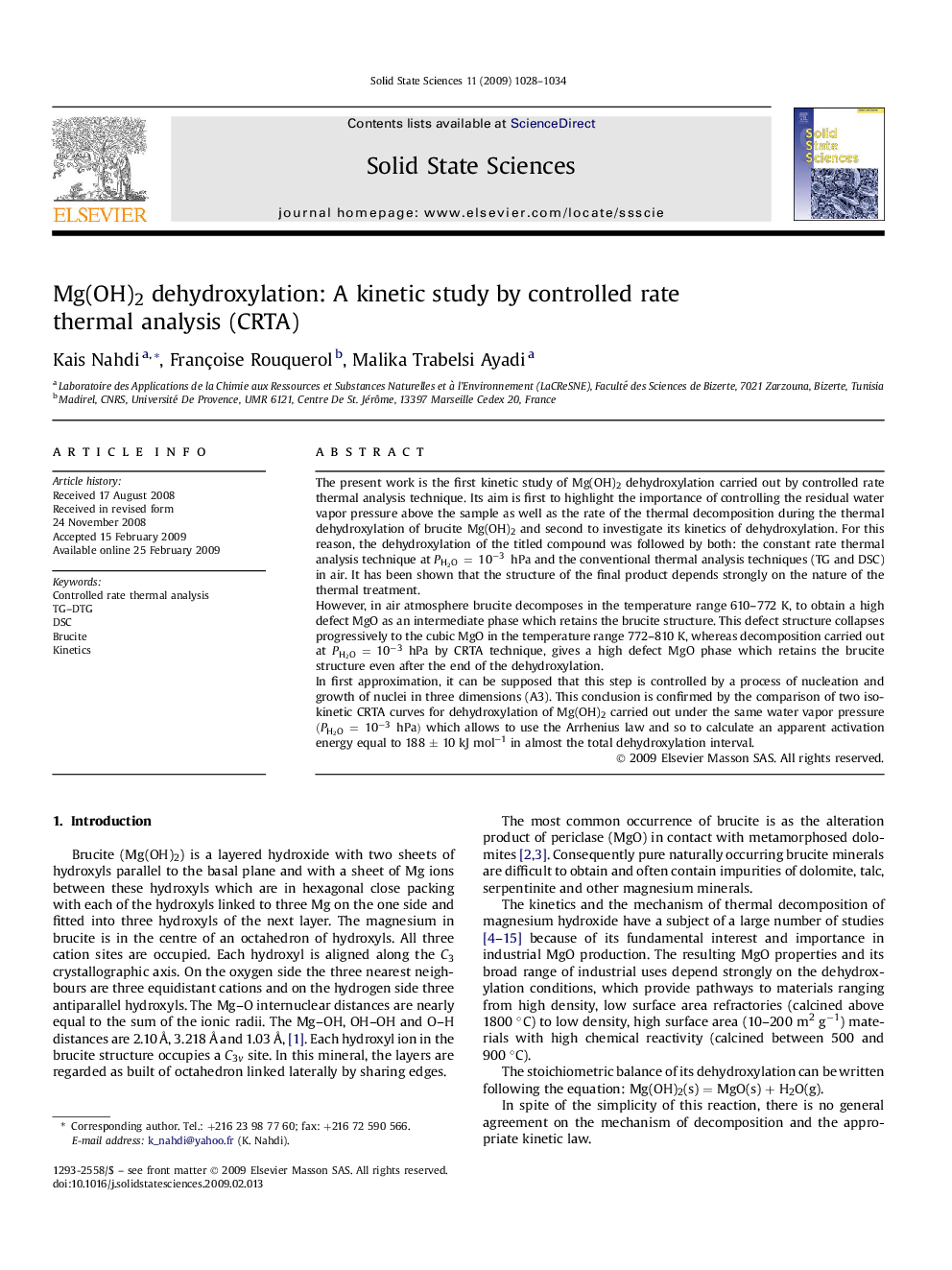| Article ID | Journal | Published Year | Pages | File Type |
|---|---|---|---|---|
| 1505992 | Solid State Sciences | 2009 | 7 Pages |
The present work is the first kinetic study of Mg(OH)2 dehydroxylation carried out by controlled rate thermal analysis technique. Its aim is first to highlight the importance of controlling the residual water vapor pressure above the sample as well as the rate of the thermal decomposition during the thermal dehydroxylation of brucite Mg(OH)2 and second to investigate its kinetics of dehydroxylation. For this reason, the dehydroxylation of the titled compound was followed by both: the constant rate thermal analysis technique at PH2O=10−3hPa and the conventional thermal analysis techniques (TG and DSC) in air. It has been shown that the structure of the final product depends strongly on the nature of the thermal treatment.However, in air atmosphere brucite decomposes in the temperature range 610–772 K, to obtain a high defect MgO as an intermediate phase which retains the brucite structure. This defect structure collapses progressively to the cubic MgO in the temperature range 772–810 K, whereas decomposition carried out at PH2O=10−3hPa by CRTA technique, gives a high defect MgO phase which retains the brucite structure even after the end of the dehydroxylation.In first approximation, it can be supposed that this step is controlled by a process of nucleation and growth of nuclei in three dimensions (A3). This conclusion is confirmed by the comparison of two isokinetic CRTA curves for dehydroxylation of Mg(OH)2 carried out under the same water vapor pressure (PH2O=10−3hPa) which allows to use the Arrhenius law and so to calculate an apparent activation energy equal to 188 ± 10 kJ mol−1 in almost the total dehydroxylation interval.
Graphical abstractFigure optionsDownload full-size imageDownload as PowerPoint slide
